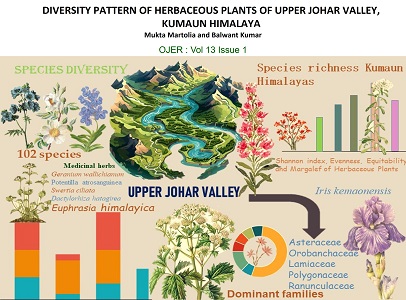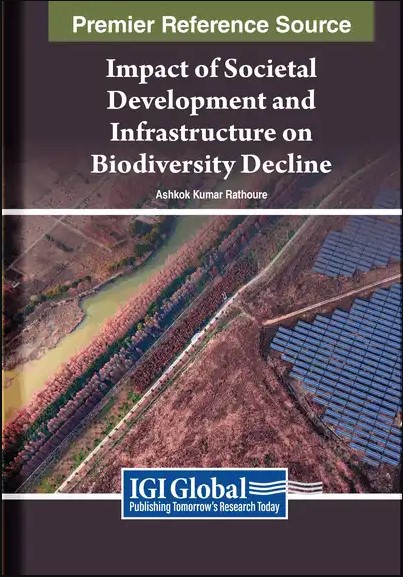DIVERSITY PATTERN OF HERBACEOUS PLANTS OF UPPER JOHAR VALLEY, KUMAUN HIMALAYA

Biodiversity Conservation Laboratory, Department of Botany, Soban Singh Jeena University Almora- 263601, Uttarakhand, Bharat, China,
The present study evaluates the species diversity and phytosociological attributes of the herbaceous layer in the upper Johar valley, Kumaun Himalaya. A total of 200 quadrats (1 x 1 m) were randomly placed across 20 sites during rainy season (July-August 2024) at elevations ranging from 3000- 3500 m ASL. The study identified 102 species of herbaceous plants belonging to 79 genera and 28 families, with Asteraceae (18 spp.) being the most dominant family, followed by Orobanchaceae (8 spp.). Phytosociological indices, including density, frequency, and their relative values, as well as dominance based on Important Value Index (IVI), were analysed. Species diversity was assessed using Shannon’s diversity index (H), species richness, evenness, and Simpson’s index (D) in PAST version 2.0 software. Euphrasia himalayica was the most dominant species in the study area. Species richness varied across the sites, with Site 1 exhibiting the highest diversity, containing 32 species. This study emphasizes the floristic composition of the region, contributing to conservation efforts and sustainable utilization strategies.


